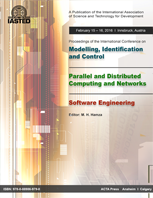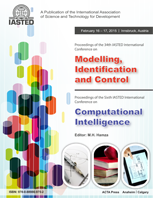The 32nd IASTED International Conference on
Modelling, Identification and Control
MIC 2013
February 11 – 13, 2013
Innsbruck, Austria
TUTORIAL SESSION
An Introduction to Inverse Simulation Methods for System Modelling and Design
Abstract
Inverse simulation is a tool that can be used to find system inputs such that model outputs will match given time histories. Thus, through inverse simulation, the behaviour of a model can be investigated in ways that are distinctly different from those available using conventional simulation techniques which provide model outputs for given sets of inputs and initial conditions. The inverse simulation approach could, for example, involve finding the control inputs necessary to perform a given aircraft manoeuvre or the inputs needed for a road vehicle to make a specified turn or match a given acceleration profile. This has been found to be particularly helpful in considering actuator design issues in the context of automatic control, where they can provide a clear indication of problems of amplitude and rate limiting. It should be noted that inverse simulation methods may be applied both with linear and nonlinear models and to multi-input multi-output models. They can also be used for model validation, where experimental data obtained from tests on a real engineering system are applied to the model. Comparisons between the model and system behaviour are then made in terms of the differences between measured inputs from the experiments and inputs predicted from the inverse simulation.This tutorial will involve a review of several methods that are available for inverse simulation, including various optimisation-based techniques, methods based on numerical solutions of differential algebraic equations and techniques based on a feedback systems approach. Much of the interest in inverse simulation has arisen in the context of specific applications, such as helicopter flight mechanics modelling and handling qualities studies, but it is demonstrated through the tutorial that the inverse simulation approach can also be useful in many other fields.
Particular emphasis is given in the tutorial to methods of inverse simulation that are based on the properties of closed-loop systems and have been the subject of recently published research. Applications considered are drawn from personal experience of the presenter. The areas involved may include problems of helicopter flight control, underwater vehicle dynamics, train performance modelling and process control.





















